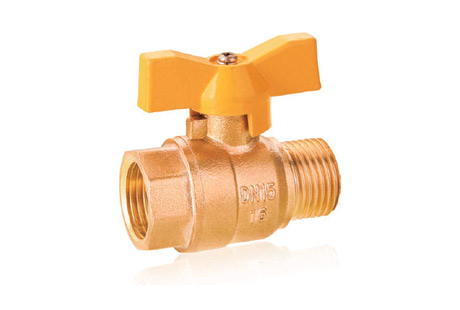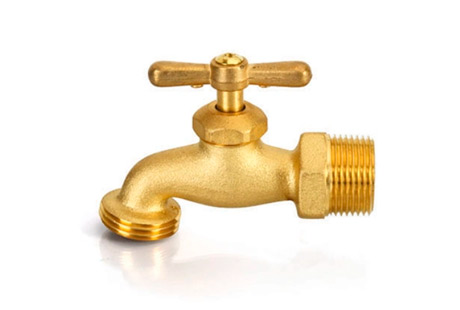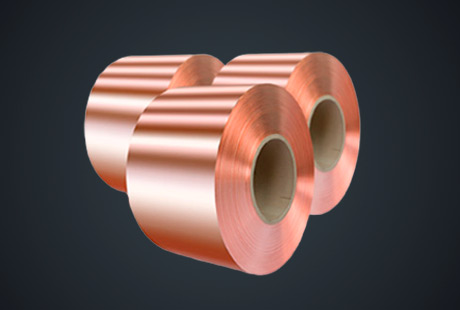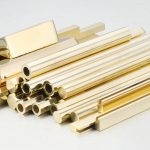What is Inner Grooved Copper Tube?
Inner Grooved Copper Tube, also known as non-smooth tube, Inner Grooved Copper Tube (IGT), refers to a copper tube with a smooth outer surface and a certain number of regular threads on its inner surface, generally made of materials like TP2, TU1, C12200, C1220, etc.
Due to the increased inner surface area of the Inner Grooved Copper Tube, its thermal efficiency performance is 20% to 30% higher than that of a smooth tube.
The development of Inner Grooved Copper Tubes roughly went through stages such as mountain tooth inner grooved tubes, trapezoidal groove inner grooved tubes, apex inner grooved tubes, and fine high tooth inner grooved tubes. Currently, high-low tooth shapes, grooved tooth tops, and double helical directions of Inner Grooved Copper Tubes have been continuously introduced.
Size parameters of Inner Grooved Copper Tubes and their impact on heat transfer performance
Outer Diameter
Currently, the main diameters of Inner Grooved Tubes are 12.7mm, 9.52mm, 7.94mm, 7mm, 6.35mm, and 5mm, among which 5mm and 7mm are the most commonly used.
As the price of copper and other raw materials rises and the national requirements for air conditioner efficiency increase, copper tubes are developing towards smaller diameters and thinner walls. However, if the diameter is too small, it will cause greater refrigerant resistance, and thinner walls increase the possibility of leakage or bursting.
Base Wall Thickness
The Inner Grooved Copper Tube typically has a base wall thickness of 0.20 to 0.30mm. The thinner the base wall, the better the heat transfer effect, but if the base wall is too thin, it weakens the strength and stability of the teeth. This can adversely affect the U-bend quality and welding quality in subsequent processes and also impact the heat transfer effect due to poor stability of the teeth.
Tooth Height
Tooth height is a significant factor affecting heat transfer. Increasing the tooth height enhances the inner surface heat transfer area and liquid film-breaking capacity, thereby improving the heat transfer effect of the inner grooved tube. However, the increase in tooth height is limited by processing technology. Currently, the tooth height of Inner Grooved Copper Tubes generally ranges from 0.10 to 0.25mm.
Helical Angle
The purpose of the helical angle is to cause the fluid to rotate, generating secondary flow in the pipeline that is different from the radial direction. This increases the intensity of turbulence, thereby enhancing convective heat transfer and increasing the heat transfer coefficient. Therefore, increasing the helical angle can enhance the heat transfer coefficient.
However, with the increase of the helical angle, the pressure loss also increases. Hence, the helical angle should not be too large and should fall within a reasonable range. Currently, the helical angle of inner grooved tubes generally ranges from 10° to 43°. According to experimental results, within this range, a smaller helical angle is better for evaporator tubes, while a larger helical angle is more suitable for condenser tubes.
Additionally, the helical angle and outer diameter have a mutually restrictive relationship. With a smaller diameter, the refrigerant flow resistance is larger, so a smaller helical angle should be chosen; with a larger diameter, the refrigerant flow resistance is smaller, so a larger helical angle should be chosen.
Tooth Tip Angle
A small tooth tip angle is conducive to increasing the inner surface heat transfer area, reducing the thickness of the condensation heat transfer liquid film, and increasing the vaporization core of evaporative heat transfer.
If the tooth tip angle is too small, the expansion resistance of the inner grooved tube teeth will be too weak. The degree to which the tooth height is compressed and the deformation of the tooth shape will increase, leading to a decrease in heat transfer efficiency. Therefore, under the premise of ensuring the expansion resistance strength of the teeth, the tooth tip angle of the Inner Grooved Copper Tube should be as small as possible. Currently, some inner grooved slender high-tooth tooth tip angles can reach approximately 10-20°.
Number of Teeth (Number of Threads)
Increasing the number of teeth or the number of threads can increase the number of vaporization cores, facilitating boiling heat transfer and increasing the inner surface heat transfer area.
However, if the number of teeth is too high, the tooth pitch will be too small, weakening the stirring intensity of the fluid inside the tube and increasing the thickness of the liquid film between the teeth, thus increasing the thermal resistance and reducing the heat transfer capacity. This makes the heat transfer efficiency of the Inner Grooved Copper Tubes close to that of smooth tubes. Therefore, the number of teeth should be controlled within a certain range.
Groove Bottom Width
A larger groove bottom width is conducive to heat transfer. However, if the groove bottom width is too large, the degree to which the tooth height is compressed and the deformation of the tooth shape will increase after expansion, leading to a reduction in heat transfer efficiency. Therefore, under the premise of ensuring the expansion resistance strength, a larger groove bottom width is better.
Wetted Perimeter
Increasing the wetted perimeter can increase the number of vaporization cores, significantly improving evaporative heat transfer efficiency. Therefore, for evaporator tubes, the larger the wetted perimeter of the Inner Grooved Copper Tubes cross-section, the better. The wetted perimeter can be increased by increasing the tooth height and reducing the tooth tip angle.

 English
English 한국어
한국어 français
français Deutsch
Deutsch Español
Español italiano
italiano العربية
العربية tiếng việt
tiếng việt Türkçe
Türkçe ไทย
ไทย 中文
中文





